How to read a water meter
Types of residential water meters
The City of Calgary installs one type of water meter in residential homes. This meter is called a Mechanic Positive Displacement meter. These meters are mechanical devices and do not have electrical components. Learn more for an overview of how this type of meter works.
There are a variety of models that The City installs. All models are Mechanic Positive Displacement meters.
How The City reads your meter
The meter in your home will be read one of three ways:
Radio transmitters
Starting in fall 2025, The City will begin a five-year program to replace residential and business water meters with updated technology that improves how water meter readings are collected. Current water meters are approaching the end of their service life, which typically lasts up to 20 years.
Residential and business water meters will be replaced on a ward-by-ward basis over the next five years. Approximately 6,000 meters will be exchanged in 2025 with the remainder of the meters replaced between 2026 and 2030.
The updated meters use radio transmitters to send water meter readings to The City frequently throughout the day, increasing meter reading efficiency. The new meters will also provide you with better customer service around leak detection, billing inquiries and water conservation.
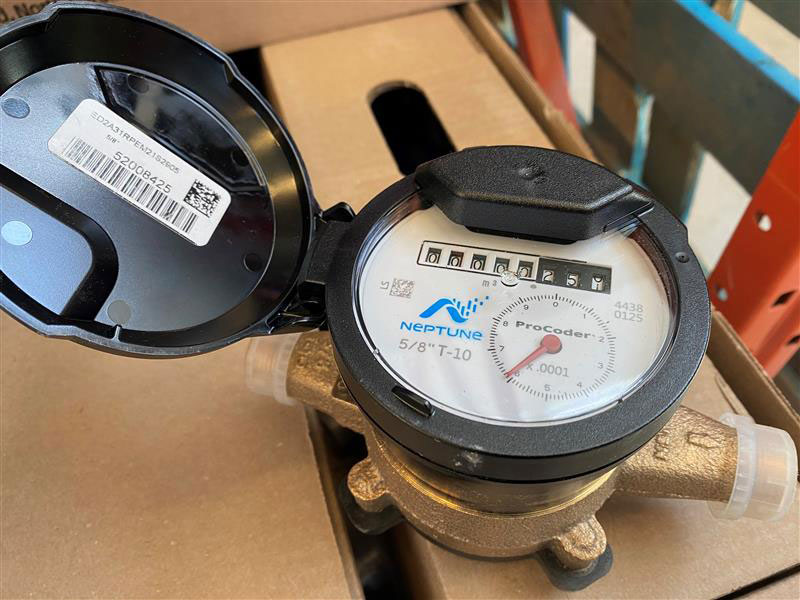
How it works
The new metering technology enables two-way remote communication between individual water meters and The City.
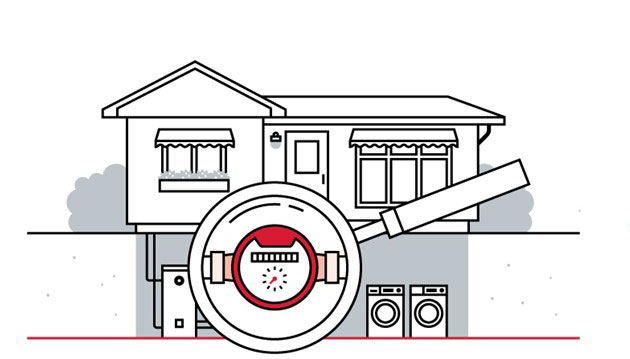
1. New water meter technology installed at your property.
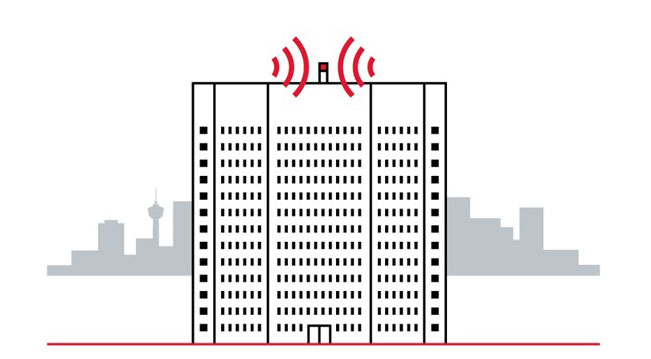
2. Water meter readings are sent from your property to secure receivers installed on City infrastructure.
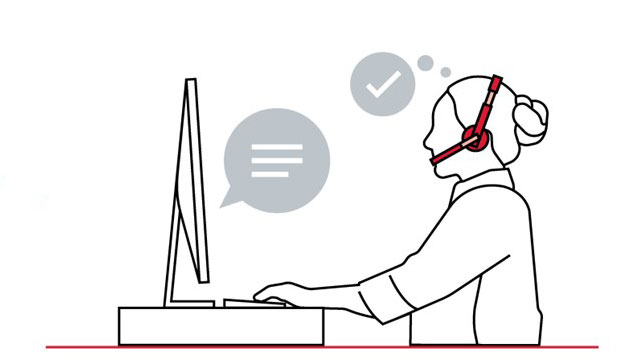
3. Water meter data is sent to our customer service centre where customers receive enhanced support for billing inquiries, leak detection and assistance with their water conservation efforts.
Remote read-out
Homes with remote read-out technology will have a rectangular device typically located on the outside of the home where the water service enters the home. Readings are displayed on the face of this device. A meter reader then walks by your home to take the meter reading manually. No one has to enter the home to read the meter.
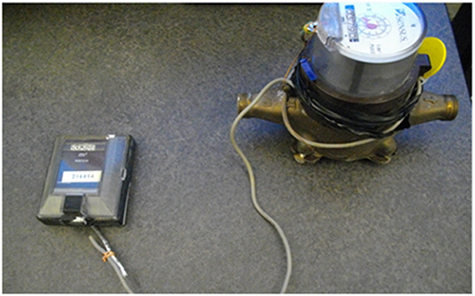
Encoder Receiver Transmitter (ERT)
The second method of technology used to read a residential meter is through Encoder Receiver Transmitters (ERTs).
This type of reading will not have a device on the outside of your home. Water readings for ERT equipped meters are electronically sent to the meter reader’s device as they near your home.
The City has a life cycle replacement program for meters to ensure our metering technology stays current and efficient. All meters replaced under this initiative will have the ERT technology.
How to read a water meter
Depending on the model of your meter, the register (or face) may look slightly different. Below are some examples of what your meter might look like.
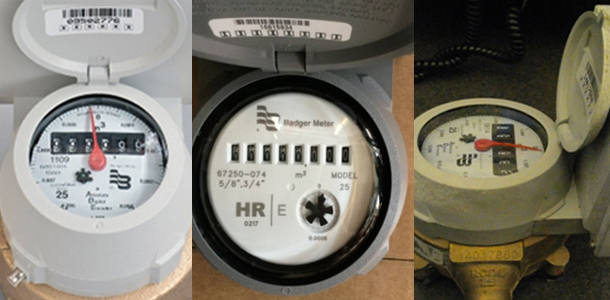
Meters record water consumption in various units. The digits to the left of the decimal point measure water usage in cubic meters (1000 litres make 1 cubic meter).
The digits on the far right of the meter face (right of the decimal point) are measuring smaller units that make up a cubic meter (hundreds of litres, ten litres and one litre).
As an example, the digits to the far right of the decimal point on the meter pictured on the left would increase by one when 10 litres of water have been used. The digits to the far right of the decimal point on meter in the center image however, would increase by one when one litre of water has been used. When the meter registers 1000 litres, or 1 cubic meter, the number to the left of the decimal point will increase by one.
Some meters will have a sweep hand, while others may have a flow indicator/register, which looks like a round gear or a triangle.
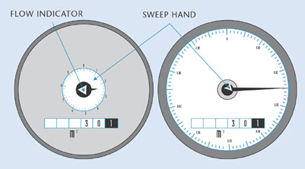
For models that have a sweep hand, one unit measures one litre, while one full rotation measures 10 litres. For models that have a flow indicator, one full rotation of the flow indicator will measure 1 litre. You can track this on your own meter by watching how the numbers increase with every rotation of the sweep hand or flow indicator/register.
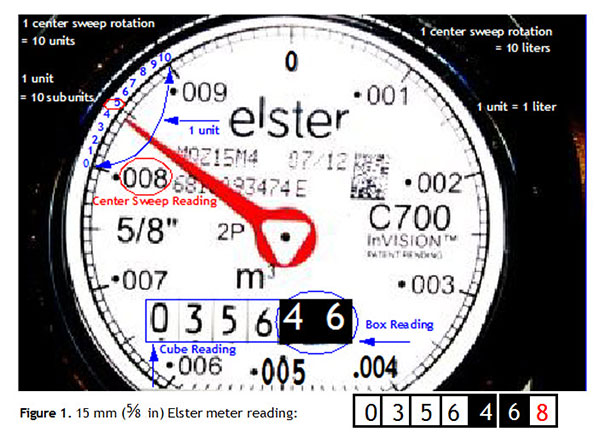
How to submit a reading for a water meter
There are a few circumstances in which you may need to take a meter reading yourself.
-
1. To test your home for leaks.
-
2. If you are moving in or out of a house
-
3. You have experienced an abnormally high water consumption and bill
What to do if you're experiencing a high water bill
Once you have completed Step 5 of the checklist, you can submit your reading the following ways:
By telephone
If you are unable to send a picture of the meter reading, write down the digits on the face of the meter.
Take note of the digits with a white background (before the decimal point) and the digits with a black background (behind the decimal point) on the meter.
- Call ENMAX at 310-2010
- Choose 2 for “home and residential services”
- Choose 3 for “City water, wastewater and waste and recycling”
- You will be directed to a customer service representative
By e-mail
- Take a picture of the face of your water meter.
- Include the following information in your email:
- Account number and service address.
- Contact phone number along with best time to contact you.
- Details of your troubleshooting findings using information gathered using this checklist.
- Send an email to:
Pictures reflecting water meter reading based on type of water:
- Water meter with outside remote read out: Take two pictures. One of the face of the meter in the house and the face of the readout outside the house. Both readings should be the same.
- Water meter with electronic transmitter - grey or black square box attached to the meter: Take a picture of the face of the meter.
Upon receipt of your e-mail, we will review your account and contact you within three business days. We will do our best to contact you during the time period you requested.

